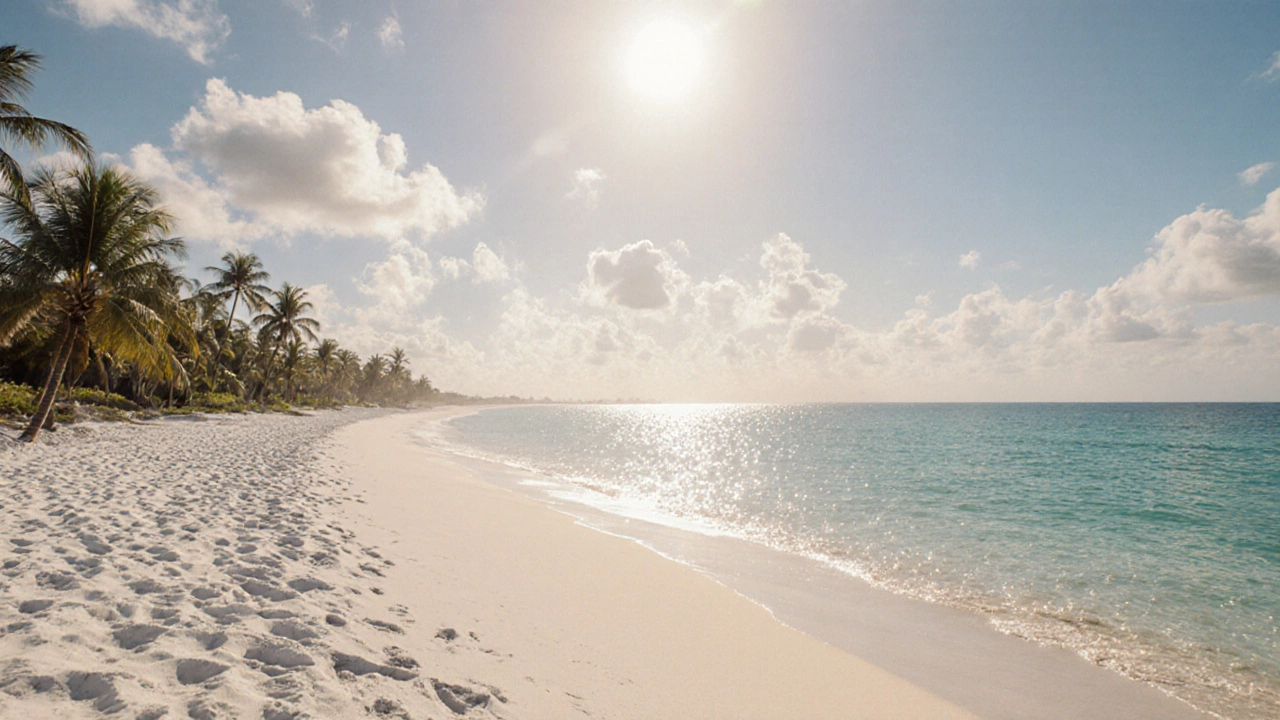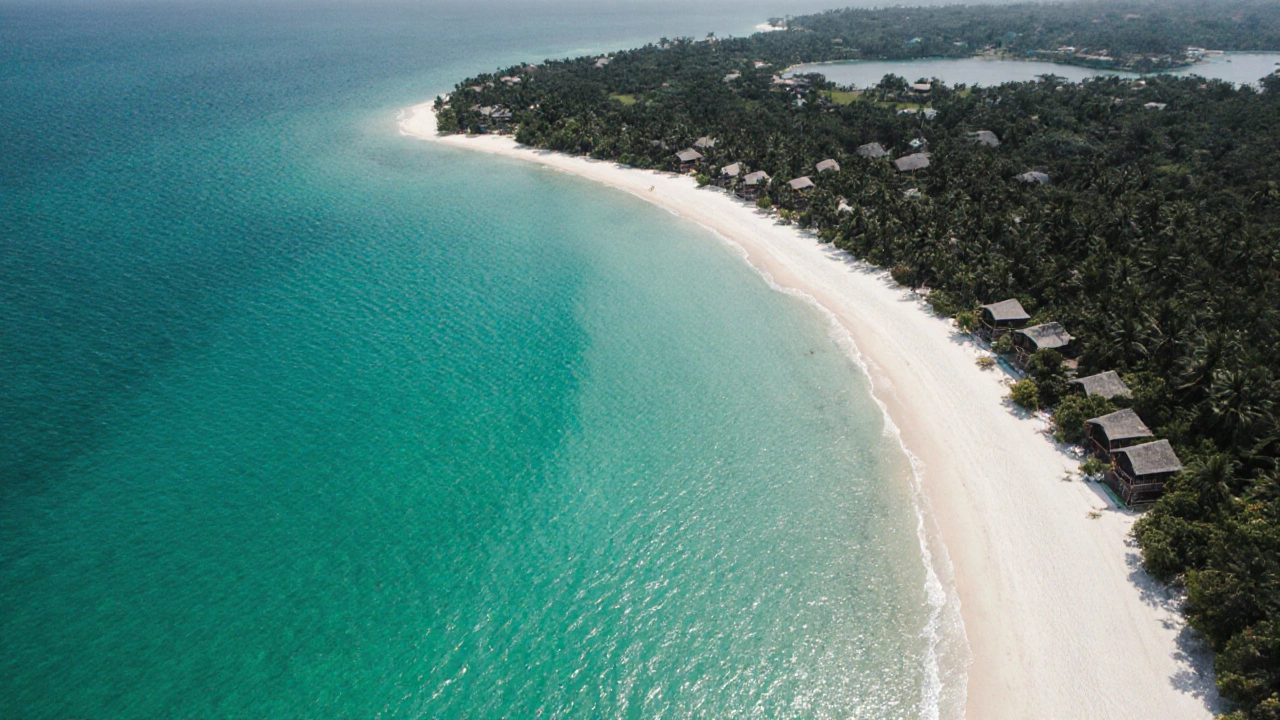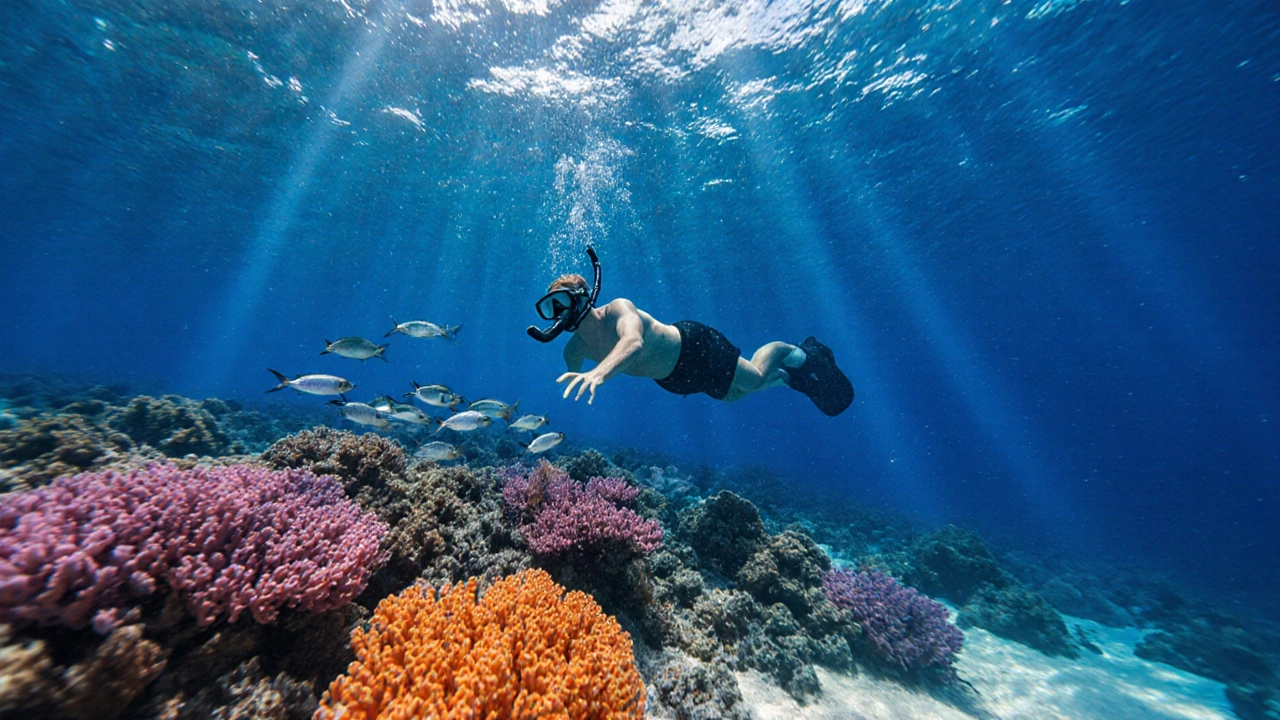Top Indian Beaches With Stunning Blue Waters

- Oct, 9 2025
- 0 Comments
- Aaron Blackwood
Indian Blue-Water Beach Explorer
Radhanagar Beach
Turquoise-green
Havelock Island, Andaman & Nicobar
Agatti Island Beach
Aquamarine
Lakshadweep
Bangaram Island Beach
Deep blue
Lakshadweep
Tarkarli Beach
Teal during low tide
Maharashtra (Konkan)
Kovalam Beach
Clear blue post-monsoon
Kerala
Varkala Beach
Vivid blue at low tide
Kerala
When you picture a perfect beach, the mind often fills with images of crystal‑clear, turquoise water lapping at soft sand. Blue water beaches in India are exactly that - stretches of coastline where the ocean takes on vivid shades of blue, often rivaling the most famous Caribbean spots. This guide pinpoints the Indian shores that consistently deliver that sparkling hue, explains how to get there, when to visit, and what to expect on the ground.
Why Travelers Crave Blue Waters
Blue water isn’t just a pretty color; it signals clean, shallow reefs, minimal pollution, and excellent light penetration - all ideal for swimming, snorkeling, and photography. In India, the combination of tropical climate, coral ecosystems, and protected islands creates pockets where the sea turns a sapphire or teal, offering a rare escape from the usual murky coastline.
Top Blue‑Water Beaches in India
- Radhanagar Beach - Havelock Island, Andaman & Nicobar Islands. Frequently ranked among the world’s best, its powder‑white sand and turquoise water are backed by dense mangroves that calm the tide.
- Agatti Island Beach - Lakshadweep. The lagoon here is a vivid aquamarine, thanks to a surrounding coral barrier that reflects sunlight.
- Bangaram Island Beach - Lakshadweep. An uninhabited cay, its water stays a striking blue year‑round, perfect for kayaking and underwater photography.
- Tarkarli Beach - Maharashtra. The Konkan coast offers clear, shallow waters that turn teal during low tide, with the backdrop of the Sahyadri hills.
- Kovalam Beach - Kerala. While known for its crescent shape, certain stretches near Lighthouse Beach reveal a deeper blue during the post‑monsoon months.
- Varkala Beach - Kerala. The cliff‑edge setting often creates a reflective pool of blue water when the tide recedes.

How to Reach Each Spot
- Radhanagar Beach: Fly into Port Blair (direct flights from major Indian metros). From there, take a 2‑hour ferry to Havelock Island and a short auto‑rickshaw ride to the beach.
- Agatti Island Beach: Book a flight to Agatti Airport (operated by Alliance Air from Kochi). The island’s small jetty is a 10‑minute walk from the main beach area.
- Bangaram Island Beach: Reach Bangaram via a speedboat from Agatti or directly from Kochi on a chartered vessel. Boats depart early morning and return by sunset.
- Tarkarli Beach: Take a train to Kudal (Konkan Railway) then a 30‑minute taxi ride. Alternatively, drive from Mumbai (≈7hrs) via NH‑66.
- Kovalam Beach: Fly into Thiruvananthapuram International Airport, then a 15‑minute taxi to Kovalam’s three main coves.
- Varkala Beach: Reach via the nearest railway station, Varkala Sivagiri (well‑connected to Trivandrum, Kochi, and Chennai). A short auto‑rickshaw ride leads to the cliff‑side promenade.
Best Time to Experience the Blue
Generally, post‑monsoon (October-March) offers calm seas and the deepest hues. In Lakshadweep, the dry season (November-April) keeps the water exceptionally clear. The Konkan coast (Tarkarli) is at its bluest during the low‑tide window in January and February, when the sea recedes and exposes sandy flats that reflect light.
Practical Tips for a Seamless Visit
- Book accommodations at least a month in advance, especially for Andaman and Lakshadweep islands where options are limited.
- Carry reef‑safe sunscreen; many blue‑water spots are part of protected marine areas.
- Check ferry schedules ahead of time - they can be weather‑dependent.
- If you plan snorkeling, bring your own mask and snorkel for hygiene reasons.
- Local seafood is abundant; try the grilled fish at beach shacks for an authentic taste.

Side‑by‑Side Comparison
| Beach | Location | Typical Water Color | Best Visiting Months | How to Reach | Facilities |
|---|---|---|---|---|---|
| Radhanagar Beach | Havelock Island, Andaman & Nicobar | Turquoise‑green | Oct‑Mar | Port Blair → Ferry (2hrs) | Resorts, eco‑camps, water‑sports |
| Agatti Island Beach | Lakshadweep | Aquamarine | Nov‑Apr | Flight to Agatti Airport | Limited guesthouses, basic amenities |
| Bangaram Island Beach | Lakshadweep | Deep blue | Nov‑Apr | Boat from Agatti or charter from Kochi | Eco‑resorts, snorkeling gear rentals |
| Tarkarli Beach | Maharashtra (Konkan) | Teal during low tide | Jan‑Feb | Train to Kudal → Taxi | Mid‑range hotels, diving schools |
| Kovalam Beach | Kerala | Clear blue post‑monsoon | Oct‑Mar | Flight to Thiruvananthapuram → Taxi | Luxury resorts, Ayurvedic spas |
| Varkala Beach | Kerala | Vivid blue at low tide | Oct‑Mar | Train to Varkala Sivagiri → Auto‑rickshaw | Hostels, boutique hotels, cliff‑side cafés |
Beyond the Beach - Nearby Attractions
Most of these locations sit near other attractions worth a day trip. From Havelock, venture to the coral‑rich Elephant Beach for night dives. In Lakshadweep, the marine museum on Agatti tells the story of centuries‑old pearl diving. Tarkarli’s proximity to Sindhudurg Fort lets history buffs explore a 17th‑century Maratha fortification. Kerala’s coast offers backwater houseboat tours that complement the beach experience.
Frequently Asked Questions
Which Indian beach has the most vivid blue water?
Radhanagar Beach on Havelock Island is widely regarded as the bluest, thanks to its surrounding coral reefs and minimal river runoff.
Is it safe to swim at Lakshadweep beaches?
Yes - the islands enforce strict marine protection, and lifeguard services are available at the main tourist beaches like Agatti and Bangaram.
Do I need a visa to visit the Andaman & Nicobar Islands?
Indian citizens need an Inner Line Permit, which is issued at Port Blair. International travelers must have a standard Indian visa plus the permit.
What’s the cheapest way to reach Tarkarli?
Take a Konkan Railway train to Kudal and share a local taxi or auto‑rickshaw. Booking a sleeper berth keeps the cost low.
Are there any restrictions for snorkeling in these blue‑water spots?
Most islands prohibit touching or collecting coral. Use reef‑safe sunscreen and follow local guidelines to protect the fragile ecosystem.